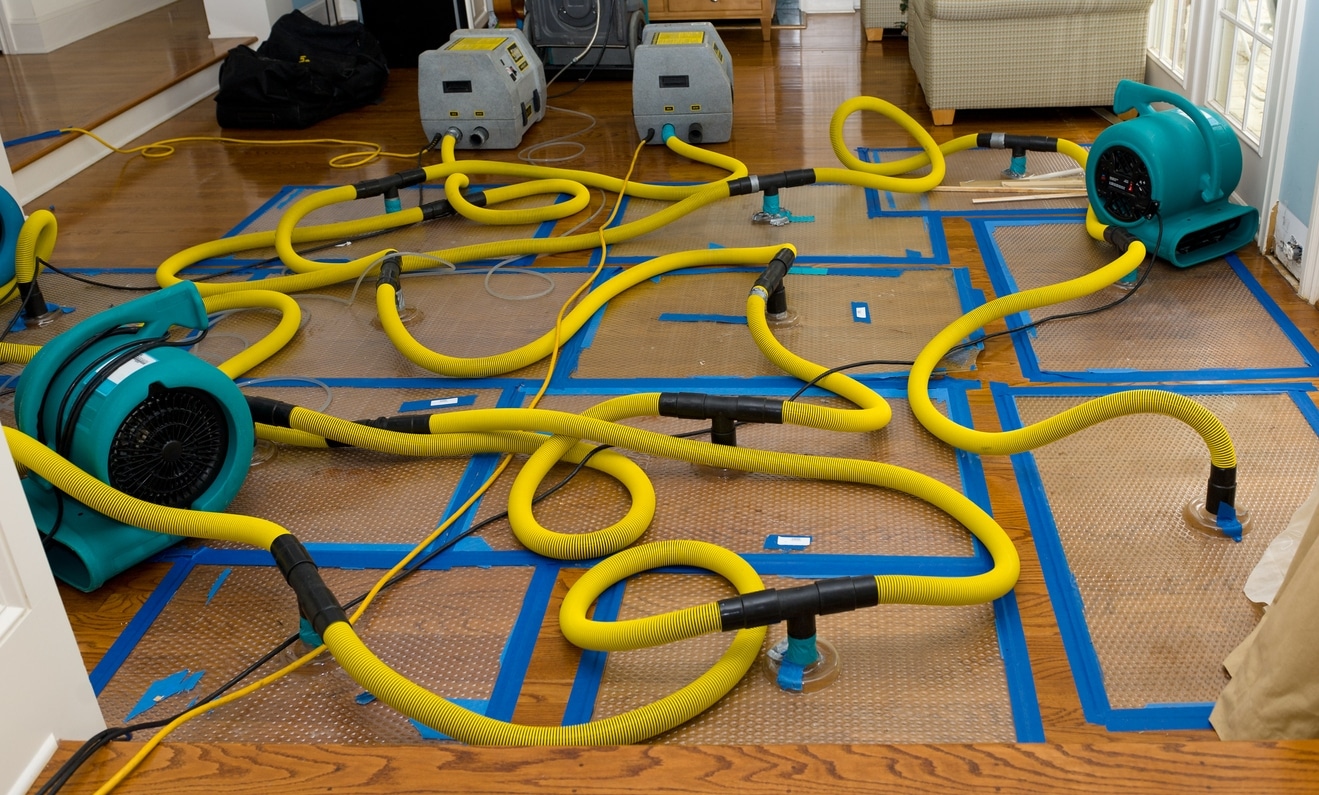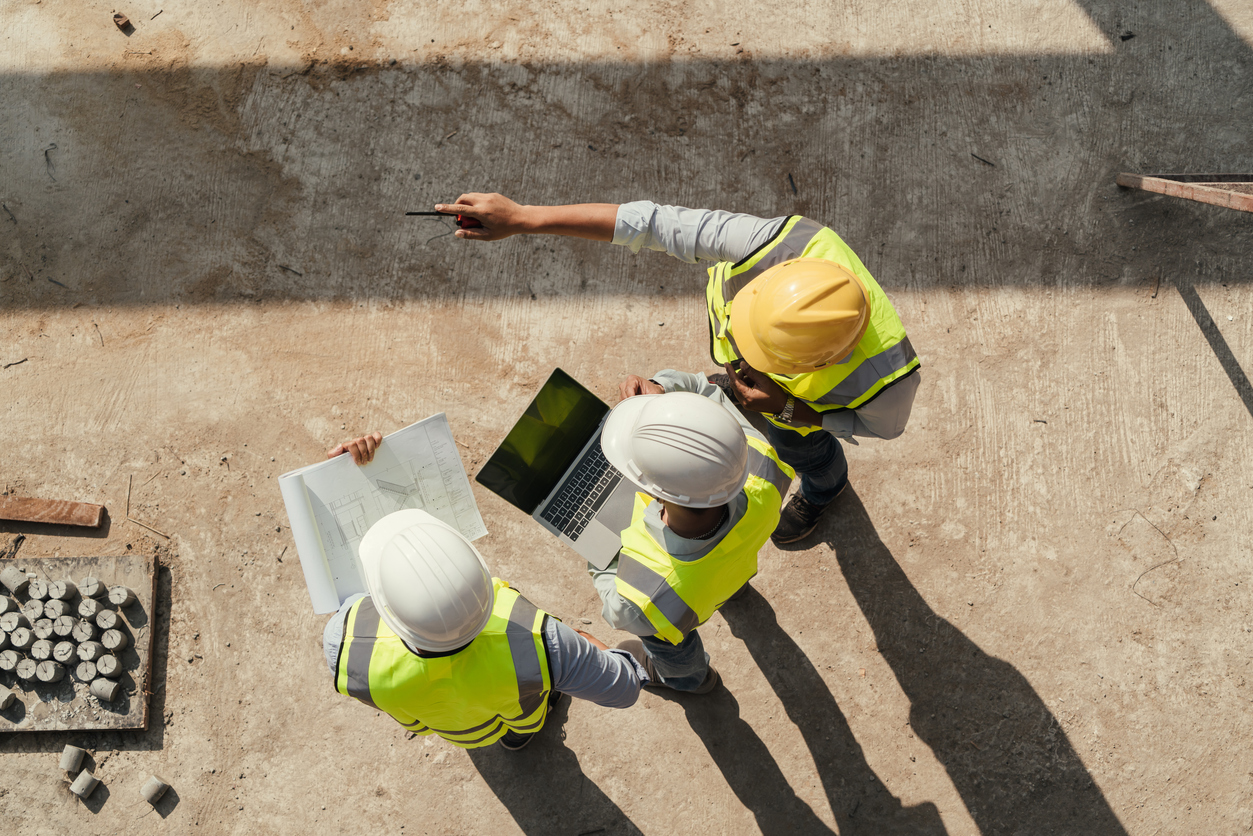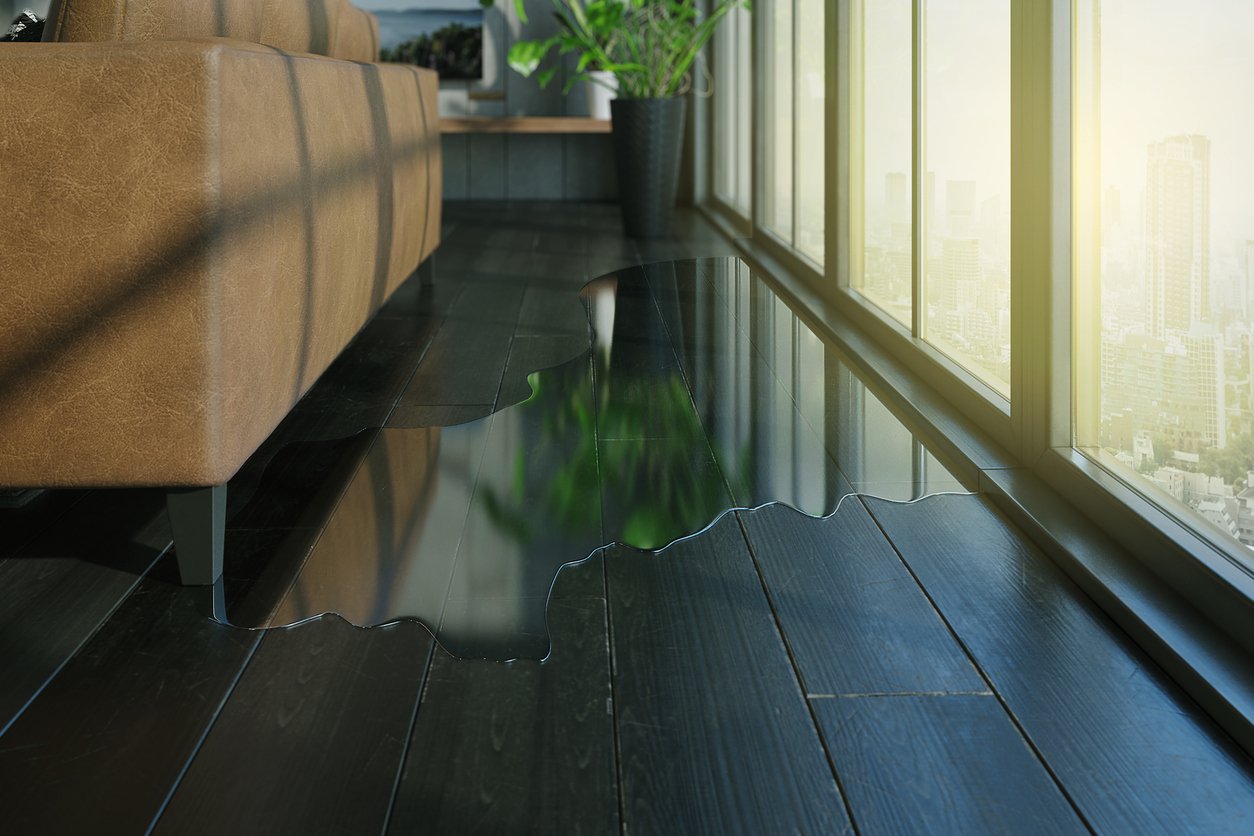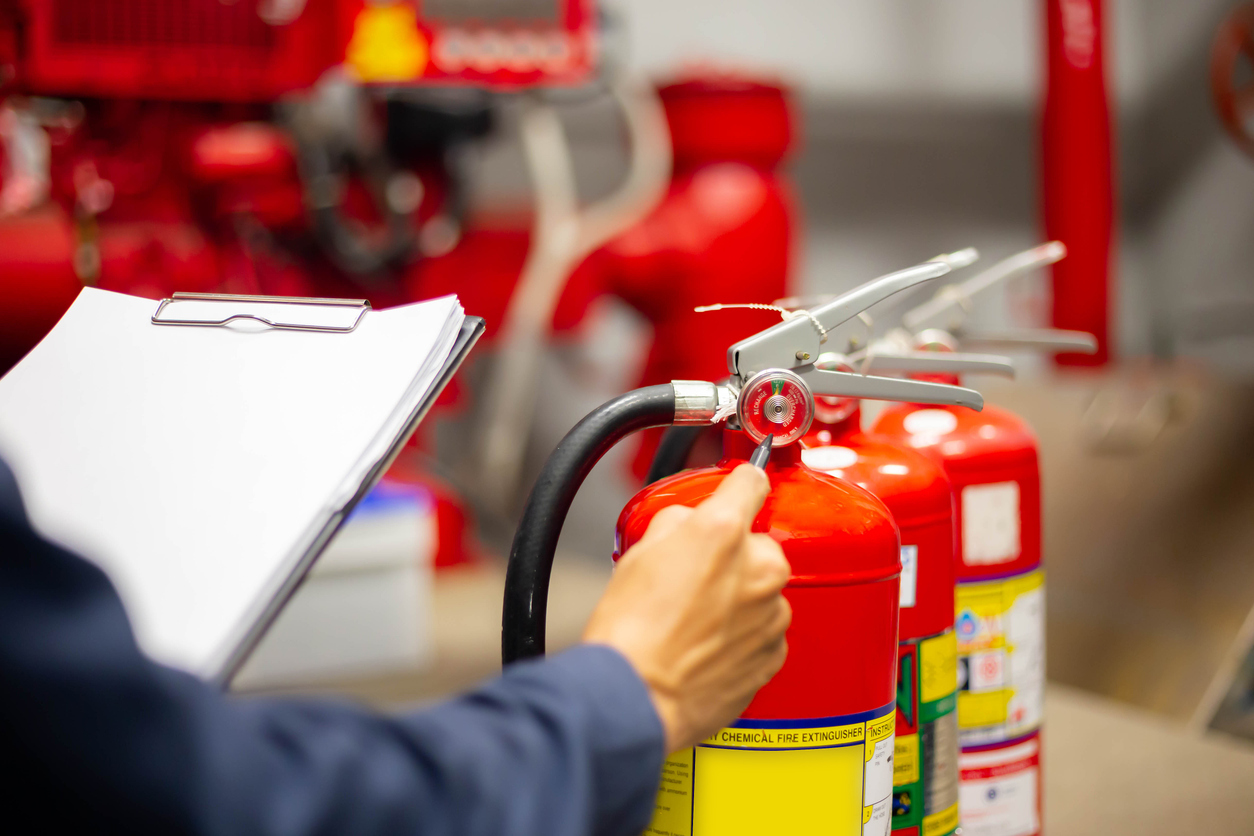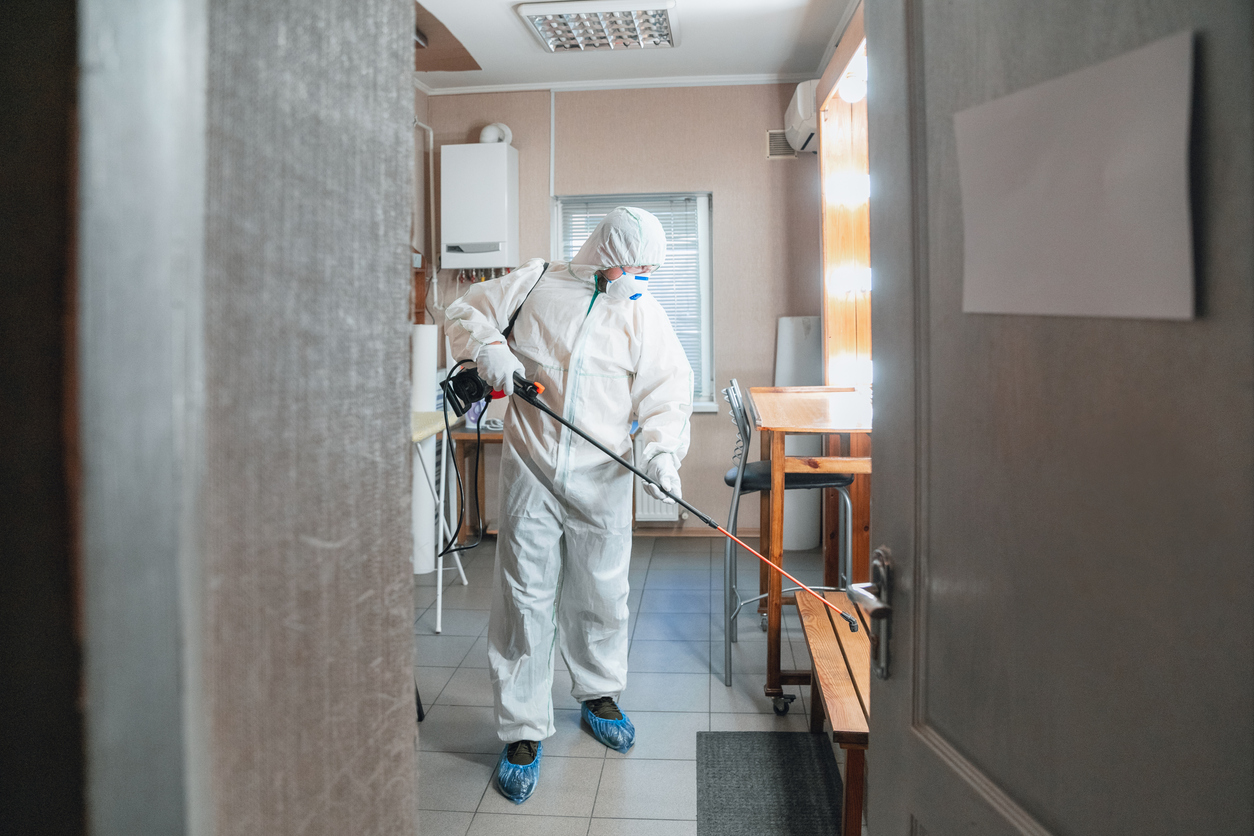In the aftermath of water damage, no matter its cause, your focus must shift quickly to repairs and restoration. Every second you wait, water is finding new ways into your walls, floors, basement, and elsewhere. To remove every last bit of moisture, you’ll need more than some old towels or a trusty mop. You’ll need structural drying–a cornerstone of the water damage restoration process.
In an effort to save time and money, too many property owners attempt water damage restoration on their own. But depending on its source, that water could be dangerous. And water damage extends far beyond visible puddles or wet streaks on walls. Moisture in the air can encourage mold and mildew growth long after surfaces are dried.
So, what is structural drying and why is it a necessary step for getting back to life as you know it? Let’s dive in on this crucial process and what it means for you.
What is Structural Drying?
Structural drying is a crucial aspect of water damage restoration, going beyond merely removing visible water to address the moisture trapped within the building’s materials. This process involves sophisticated techniques to ensure complete drying, preventing long-term issues such as mold growth and structural weakness.
Important Elements of Structural Drying
- Standing Water Removal: For starters, we’ll remove all standing water wherever it’s found. Using powerful pumps, we extract puddles so the drying process can begin.
- Thermal Imaging: This technology allows professionals to visualize moisture levels in various structures without destructive methods, pinpointing areas that require attention.
- Dehumidification: By reducing the air’s moisture content, dehumidifiers accelerate the drying of structural components.
- Deodorization: Water damage can leave behind musty odors. Deodorization is an essential step in restoring the air quality and ensuring the environment is pleasant and safe.
Why Structural Drying is Important
- Mold Prevention: Proper structural drying is crucial for preventing mold growth, which can cause health issues and damage building materials. By preventing mold today, we’re getting you back on the right foot for the foreseeable future.
- Structural Integrity: Moisture can weaken the structural components of a building. Effective drying maintains the strength and longevity of these materials, preventing further damages or even potential collapses.
- HVAC Operation: Your heating, ventilation, and air conditioning (HVAC system) doesn’t just treat the temperature of air–it controls humidity, too. Your HVAC system won’t work as well with excess moisture in the air and wet pockets hidden in the walls or floors.
- Comfort and Odor Control: Excess moisture can lead to unpleasant odors and a humid atmosphere, affecting comfort levels. Structural drying restores a comfortable and odor-free environment.
The Structural Drying Process
Structural drying is paramount after water damage–not just for immediate recovery but for long-term property integrity and safety. Effective structural drying, involving advanced techniques like thermal imaging and dehumidification, preserves the building’s integrity, ensures a healthy environment, and maintains comfort levels by stabilizing humidity and eliminating odors.
- Initial Assessment: The structural drying process begins with a thorough assessment, utilizing advanced tools like thermal imaging cameras to accurately detect moisture levels throughout the property. This initial step is crucial for identifying the extent of water damage and formulating an effective drying strategy.
- Water Extraction: Before the drying can effectively start, any standing water must be removed. This step involves using powerful pumps and vacuums to ensure that all excess water is extracted from the property, setting the stage for efficient dehumidification.
- Employing Air Movers: Air movers play a pivotal role in the structural drying process. These high-powered fans are strategically placed to facilitate optimal airflow across wet surfaces, significantly enhancing the evaporation rate of moisture from structural components and furnishings.
- Dehumidification: Industrial-grade dehumidifiers are then deployed to reduce the humidity levels in the air, extracting moisture to prevent mold growth and secondary water damage. This step is vital for stabilizing the environment and facilitating the drying of materials.
- Monitoring and Adjustment: Throughout the drying process, professionals continuously monitor the environment using moisture meters and other tools, adjusting equipment settings as needed to ensure efficient and thorough drying. This adaptive approach ensures the best possible outcome.
- Final Steps – Sanitization and Deodorization: Once the structure is dry, the focus shifts to sanitizing and deodorizing the area to eliminate any odors and bacteria, ensuring the space is clean, safe, and comfortable. This final phase marks the completion of the structural drying process.
Choosing A Structural Drying Service for Your Needs
When choosing the best water damage restoration company, it’s important to consider several factors. First, limit your search to companies that have extensive experience and a solid track record of handling the scale of structural drying that you need performed.
They should employ certified professionals who are knowledgeable in the latest drying technologies and strategies, including thermal imaging and advanced dehumidification techniques. They should also be providing a comprehensive assessment of your property’s damage and a clear, detailed plan for the drying process.
Finally, a leading company should focus on transparent communication, keeping you in the loop with regular updates on the progress of the project, along with any adjustments that are needed. Beyond structural drying, a water damage restoration company can facilitate discussions between property owners and insurance adjusters for the best outcomes all around.
Partner with Advanced Structural Drying Technologies
When faced with the challenge of water damage, the success of restoration relies on effective structural drying. Advanced Structural Drying Technologies is your expert in Tennessee, offering leading-edge solutions that ensure your property is thoroughly dried and restored.
Dry Out with Advanced Structural Drying Technologies in Arrington
Turn to Advanced Structural Drying Technologies for top-tier structural drying services. Trust us with your residential or commercial structural drying needs, and let us bring back the comfort and safety of your space. Just reach out online, or call us at 615-437-4407 to speak to a local expert.

